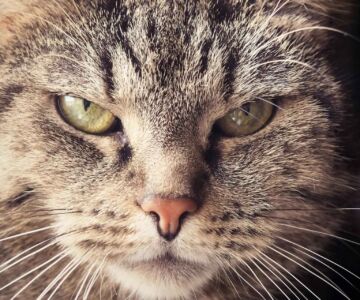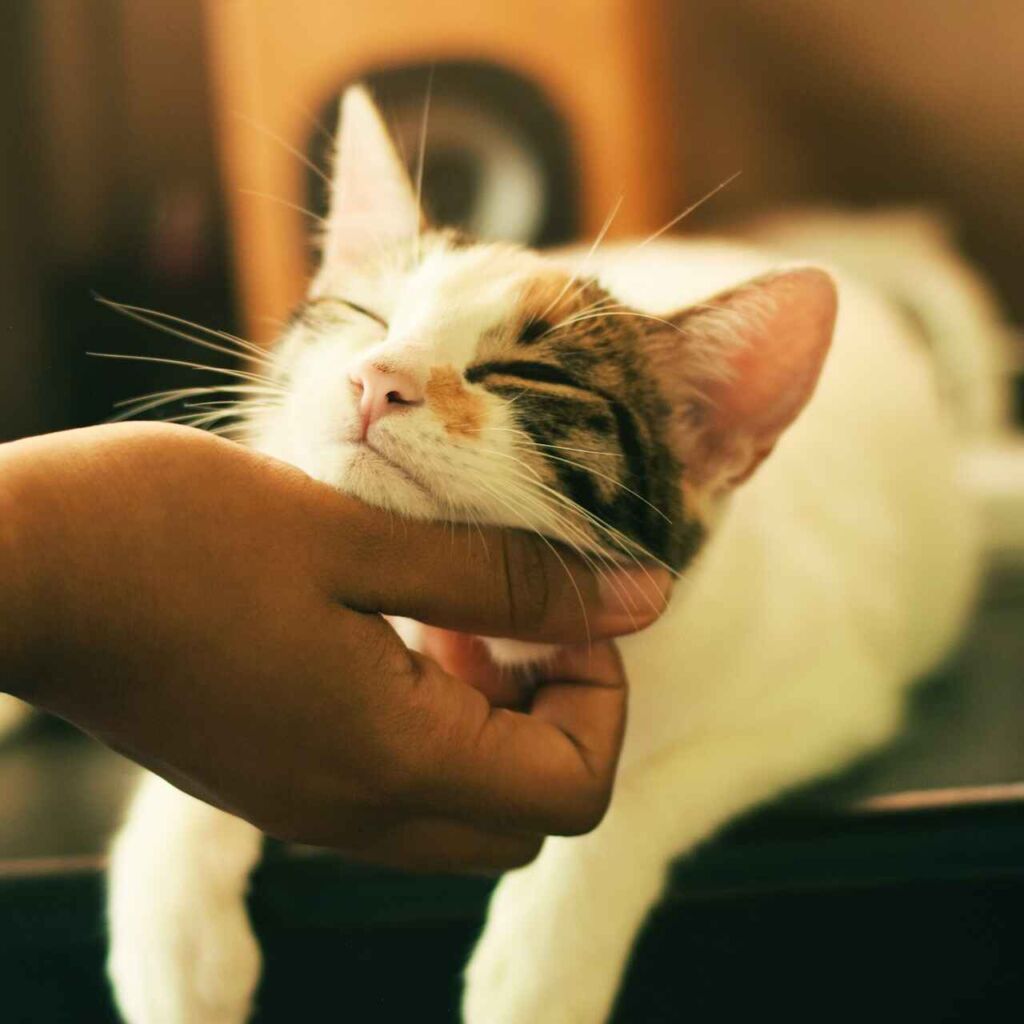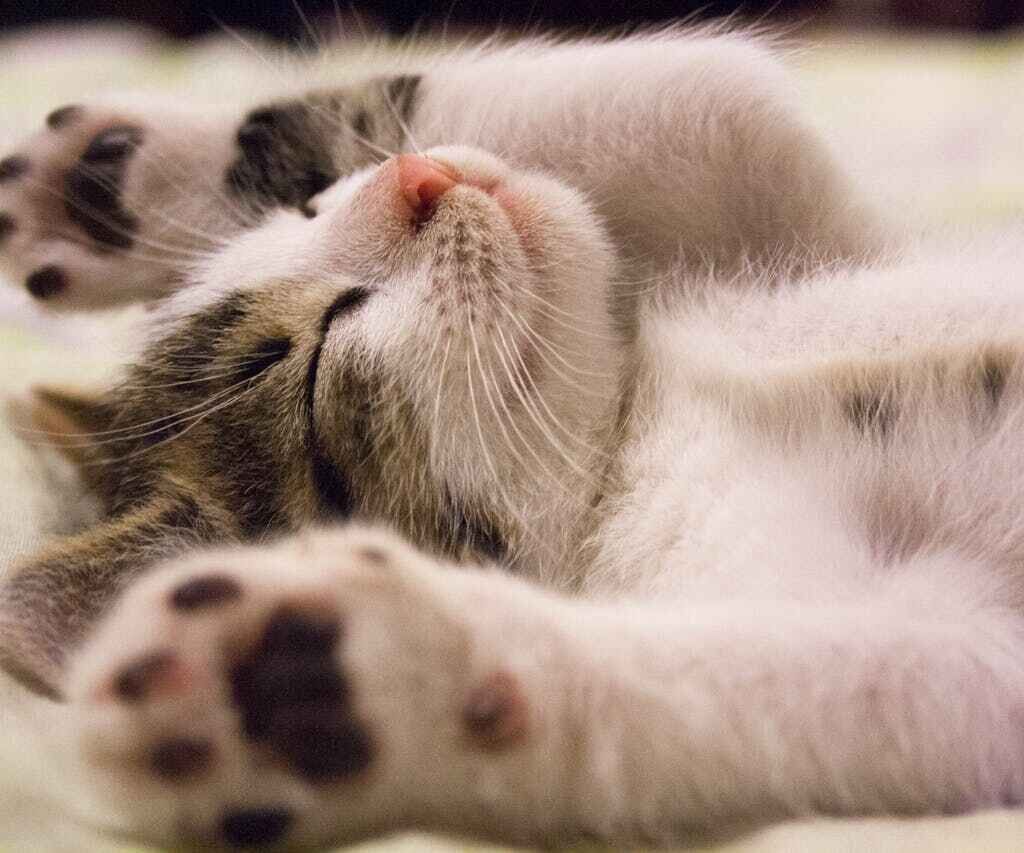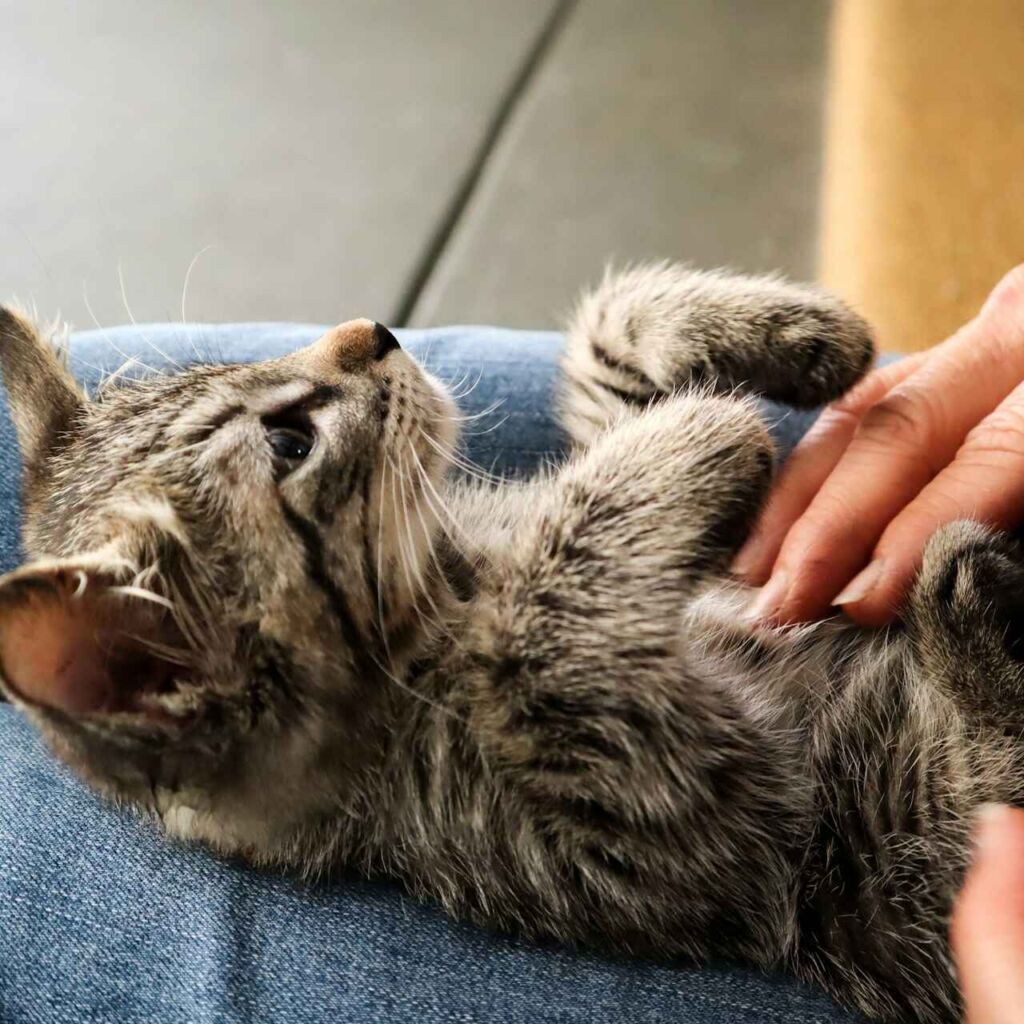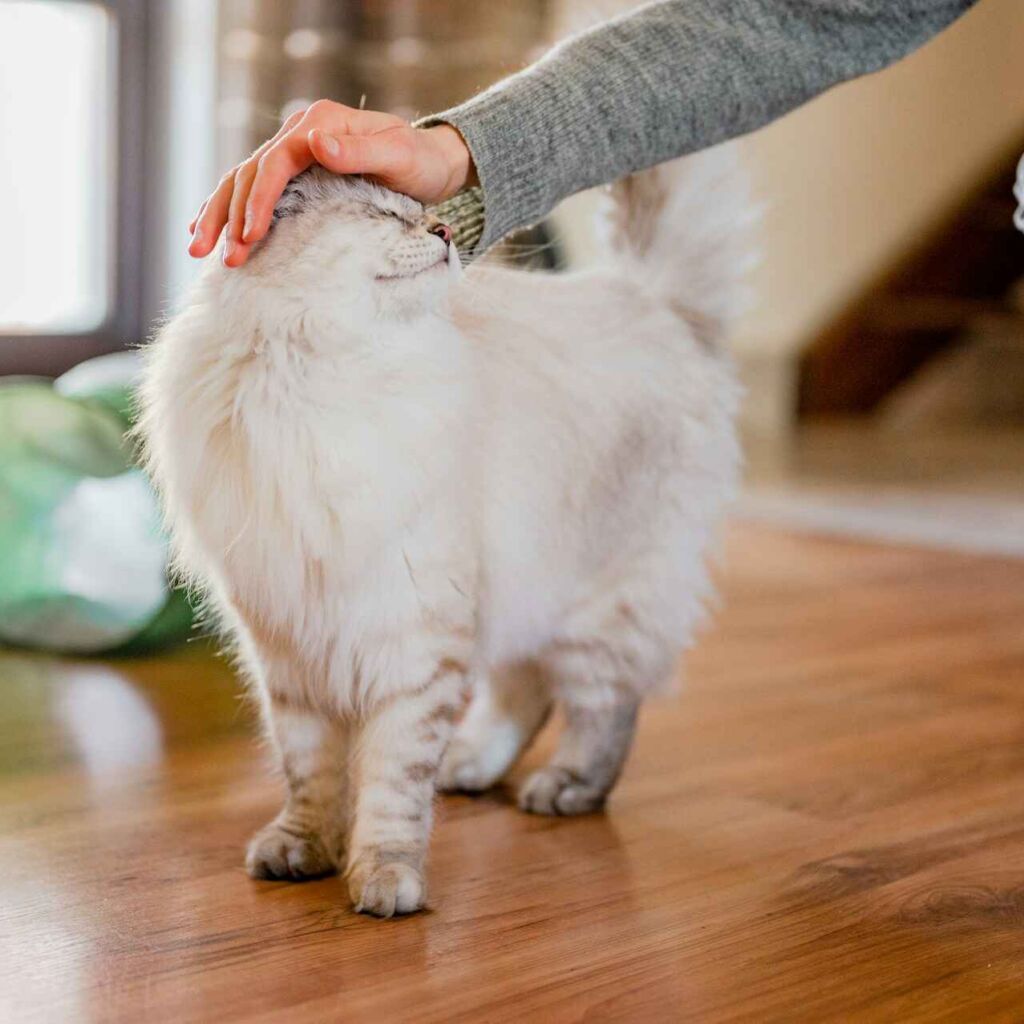Learning how cats communicate can make your bond with them stronger. Cats often show their feelings through body language instead of meowing. By understanding their postures, facial expressions, and tail movements, you can know how they feel. This guide will share important tips and interesting facts to help you talk better with your cat.
Key Takeaways
- Cats spend about 8% of their resting time grooming themselves, which is crucial for ectoparasite control.
- Several slow blinks followed by a prolonged eye narrowing indicate a positive emotional response in cats.
- A high-held tail with a slight curl forward indicates friendliness, while a low-held and tucked tail indicates fear or unease.
- Kittens vocalize early in their development, using purring and meowing as specific communication tools.
- Recognizing various body language signals, such as ear position and tail movement, is key to understanding your cat’s emotions.
Introduction: Understanding Cat Body Language for Better Communication
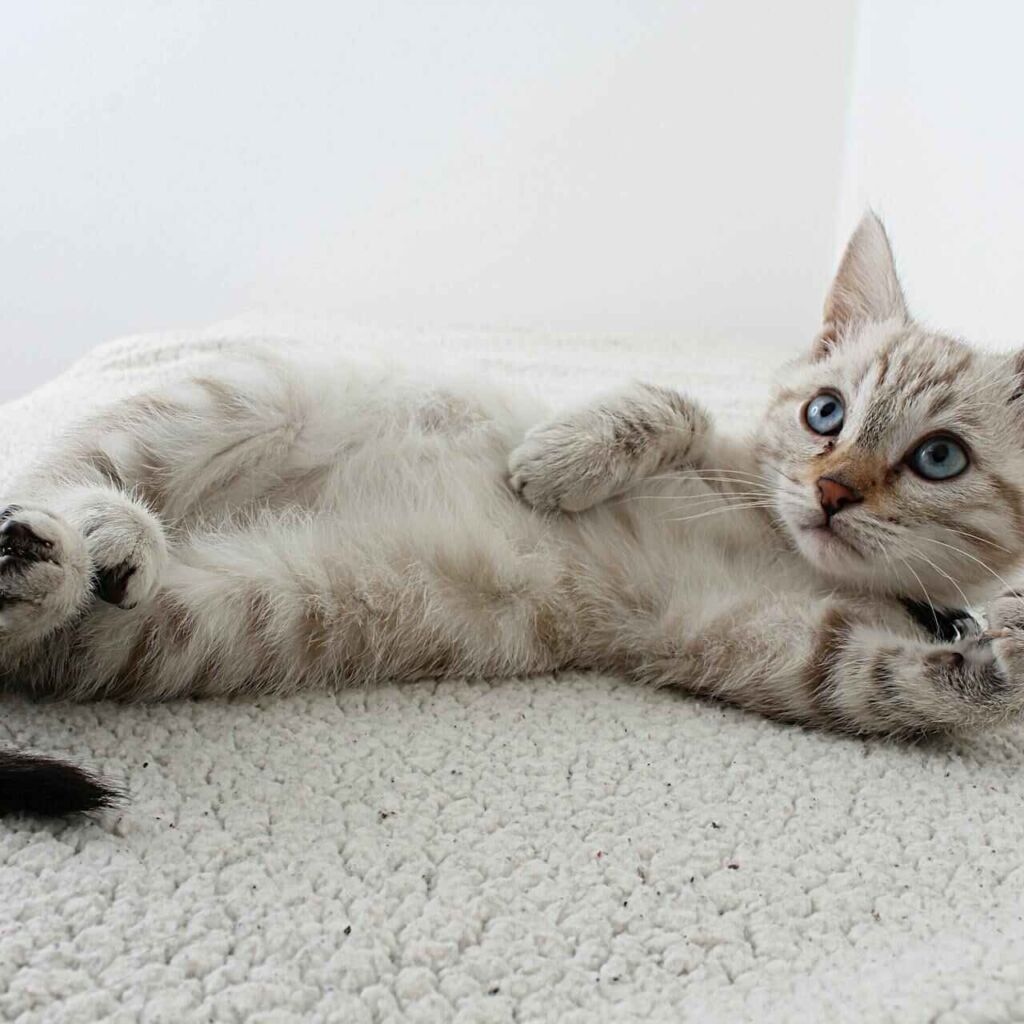
Learning about cat communication is key to a happy life with your cat. Cats use their faces, body language, and sounds to tell us what they need and feel. By understanding these signs, you can connect better with your pet understanding.
Cats talk to each other with their faces, body language, scent, and touch. It might seem hard to figure out what they mean, but each move has a special meaning. For example, a high tail means they’re curious or happy, but a lashing tail shows they’re upset.
Did you know how complex cat language is? Cats meow mainly for us, showing they’ve learned a special way to talk to us. Looking into a cat’s eyes can be tricky; staring can seem aggressive, but a slow blink means they trust you.
A cat’s body position tells us a lot too. A tall tail means they’re feeling good and friendly. But a low tail shows they’re scared or nervous. If a cat stands sideways or away from you, it tells you how they’re feeling.
Exploring these parts of cat communication can change how you talk to each other. With better pet understanding, you’ll know and honor your cat’s body language.
Deciphering Facial Expressions
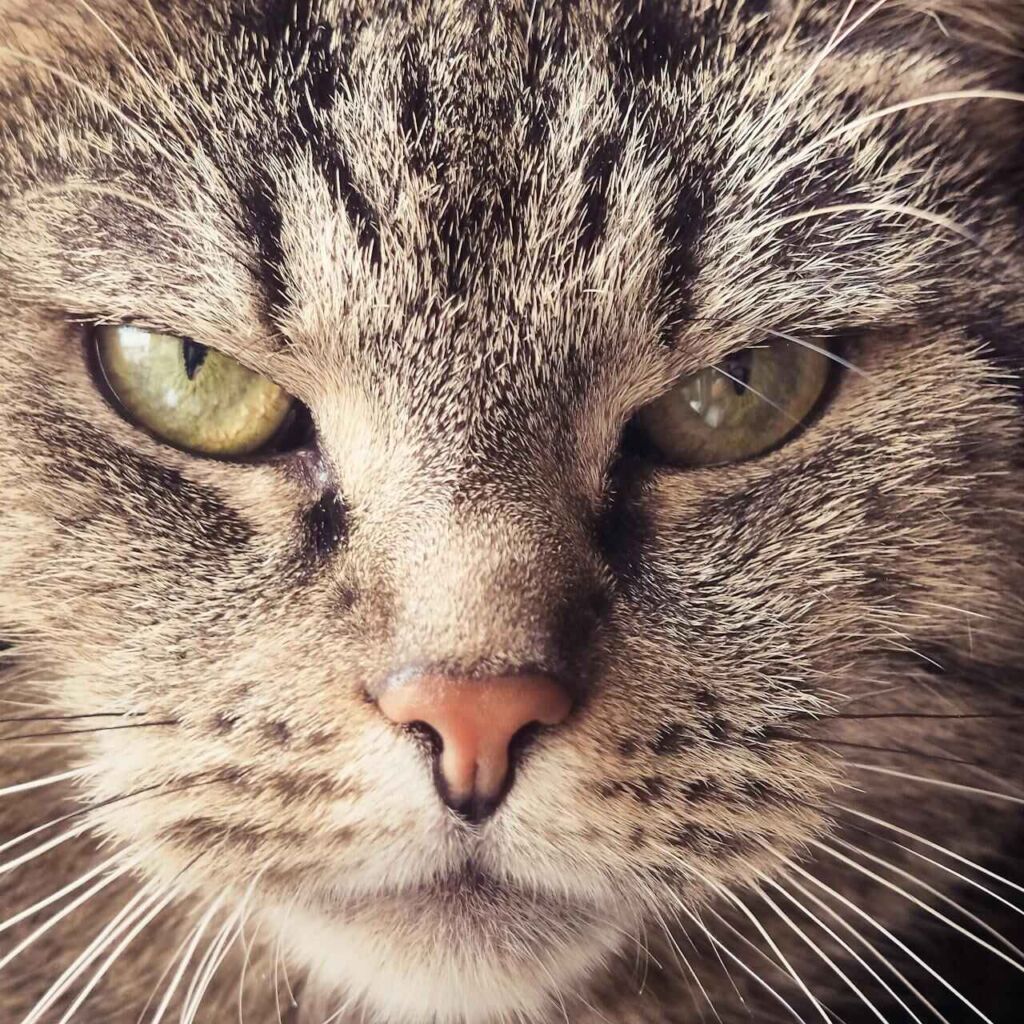
Understanding cat facial expressions is key for pet owners. It helps them know what their cat is feeling. By watching these signs, you can connect better with your cat.
Relaxed Expression
A relaxed expression means a cat is happy and at ease. Look for half-closed eyes, a soft mouth, and calm whiskers. This face shows your cat feels safe and happy.
Alert Expression
An alert expression shows a cat is curious or ready to act. Watch for wide eyes, ears forward, and a focused look. This tells you your cat is interested in something or wants to play.
Fearful Expression
A fearful expression means a cat is scared or defensive. Signs include big pupils, flat ears, and a tight mouth. Knowing these signs helps you comfort your cat when it’s feeling anxious.
Aggressive Expression
An aggressive expression warns of a cat’s upset or need to be in charge. Look for narrow eyes, showing teeth, and ears forward. Spotting these signs helps you prevent fights or understand your cat’s limits.
Interpreting Body Postures
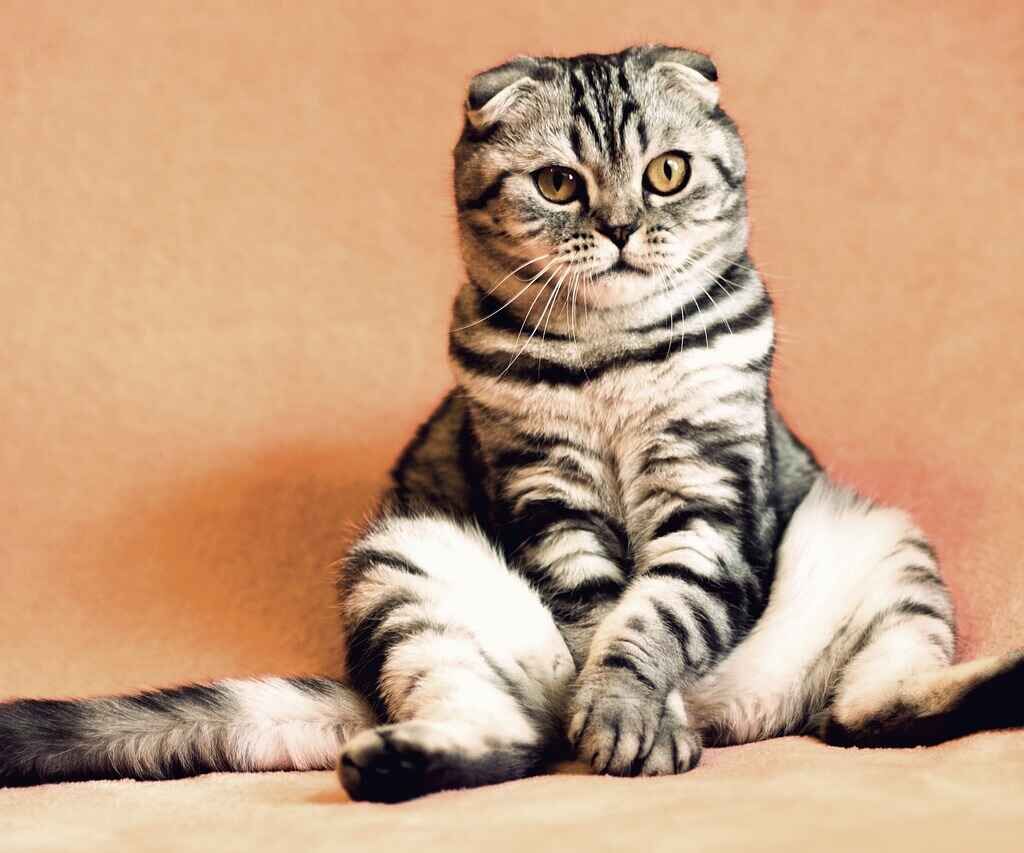
Understanding cat body postures is key to knowing their feelings and actions. Each posture sends a special message. It helps cat owners understand their pet’s mood. Let’s explore the main feline postures and what they mean.
Relaxed Posture
A relaxed posture means a cat feels safe and happy. It’s seen when a cat stretches out its limbs or tucks its paws under its body. This shows it’s comfortable and not worried about threats. Knowing this helps cat owners see when their cat is content.
Defensive Posture
A defensive posture means a cat feels threatened or scared. Signs include an arched back, puffed-up fur, and ears against the head. These postures show the cat is trying to look bigger to scare off threats. Understanding this helps owners remove stress from their pet’s life.
Aggressive Posture
Aggressive postures are meant to scare and show dominance. Cats act aggressive with flattened ears, a lashing tail, and direct stare. They might also crouch low, ready to jump. These signs warn others to stay away. Knowing them can prevent fights.
Submissive Posture
Submissive postures help avoid fights or show respect. A cat might roll over or lower its body with its tail tucked in. These actions show a cat wants to make peace or show it’s not aggressive. It’s key for better relationships with pets.
By watching and understanding these postures, owners can meet their pet’s needs better. It makes living together smoother. Knowing what each posture means deepens the bond between cats and their humans.
Body Language: Understanding Tail Movements
Learning about a cat’s tail movements can tell us a lot about its feelings. Knowing these cat tail signals can make the bond with your cat stronger. Each tail position has its own meaning, showing us how cats feel through their tail movements.
Tail Up
A high tail usually means the cat feels confident and happy. Cats with their tails up are usually friendly and ready to play. This shows they feel safe and happy in their space.
Tail Curved
A curved tail tip is a friendly sign. It means the cat is open to meeting others. They might want to play or get petted.
Tail Twitching
Twitching tails can mean different things. It could be excitement, annoyance, or focus. Watching the cat’s other body language helps figure out what it’s feeling.
Tail Puffed Up
A puffed tail usually means the cat is scared or ready to defend itself. It makes the cat look bigger to scare off threats. This is important to know because it shows the cat is stressed or alert.
Tail Wagging
Cats wag their tails for many reasons, not just happiness. Unlike dogs, it’s not always a sign of joy. Fast wagging can mean excitement or frustration, while slow wagging might show irritation or thoughtfulness.
| Tail Position | Emotion or Behavior |
|---|---|
| Tail Up | Confidence, friendliness |
| Tail Curved | Greeting, approachability |
| Tail Twitching | Excitement, irritation |
| Tail Puffed Up | Fear, aggression |
| Tail Wagging | Enthusiasm, frustration |
Watching and understanding these cat tail signals helps you talk better with your cat. As you get better at reading feline tail language, you can meet their needs and feelings better. This makes living together easier and more peaceful.
Deciphering Vocalizations
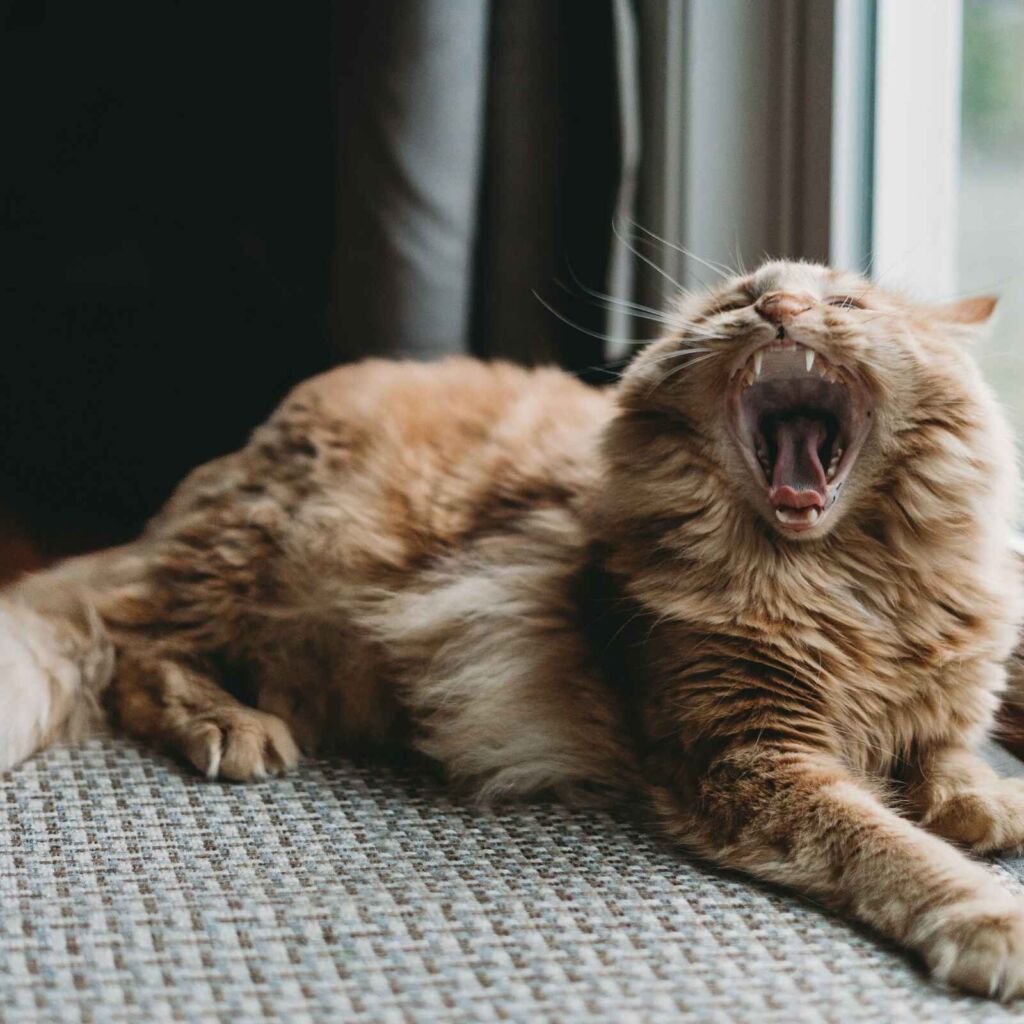
Cats make many sounds, each with its own meaning. Learning what these sounds mean can make your bond with your cat stronger. From happy purrs to warning hisses, each sound tells you something about your cat’s feelings and needs.
Meowing
Meowing is how cats talk to us. The tone and pitch of a meow can mean different things. A high-pitched meow might be a hello or a request. A low meow could mean they’re upset or need something.
By listening closely, you can understand what your cat is trying to say. This helps you meet their needs better.
Purring
Purring is often a sign of happiness in cats. But, they also purr when they’re in pain or stressed. It’s a way for them to calm down.
So, if you notice purring, think about the situation. It might tell you more about how your cat is feeling.
Hissing
A hiss means a cat is scared, angry, or uncomfortable. It’s a way for them to warn others to stay away. If a cat hisses at you, give them space and let them calm down.
Growling
Growling is similar to hissing. It shows a cat is feeling threatened and ready to defend itself. If you hear growling, it’s best to be careful and try to calm your cat down.
Chirping and Chattering
Chirping and chattering happen when cats watch birds or other small animals. These sounds might show excitement, frustration, or a hunting instinct. While we’re not sure exactly what they mean, they give us clues about your cat’s nature.
Understanding cat sounds is key to a good relationship with your cat. By knowing what these sounds mean, you can better care for your cat’s needs. This makes your home a happier place for both of you.
